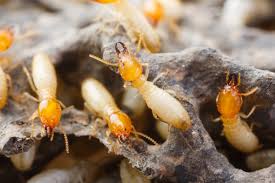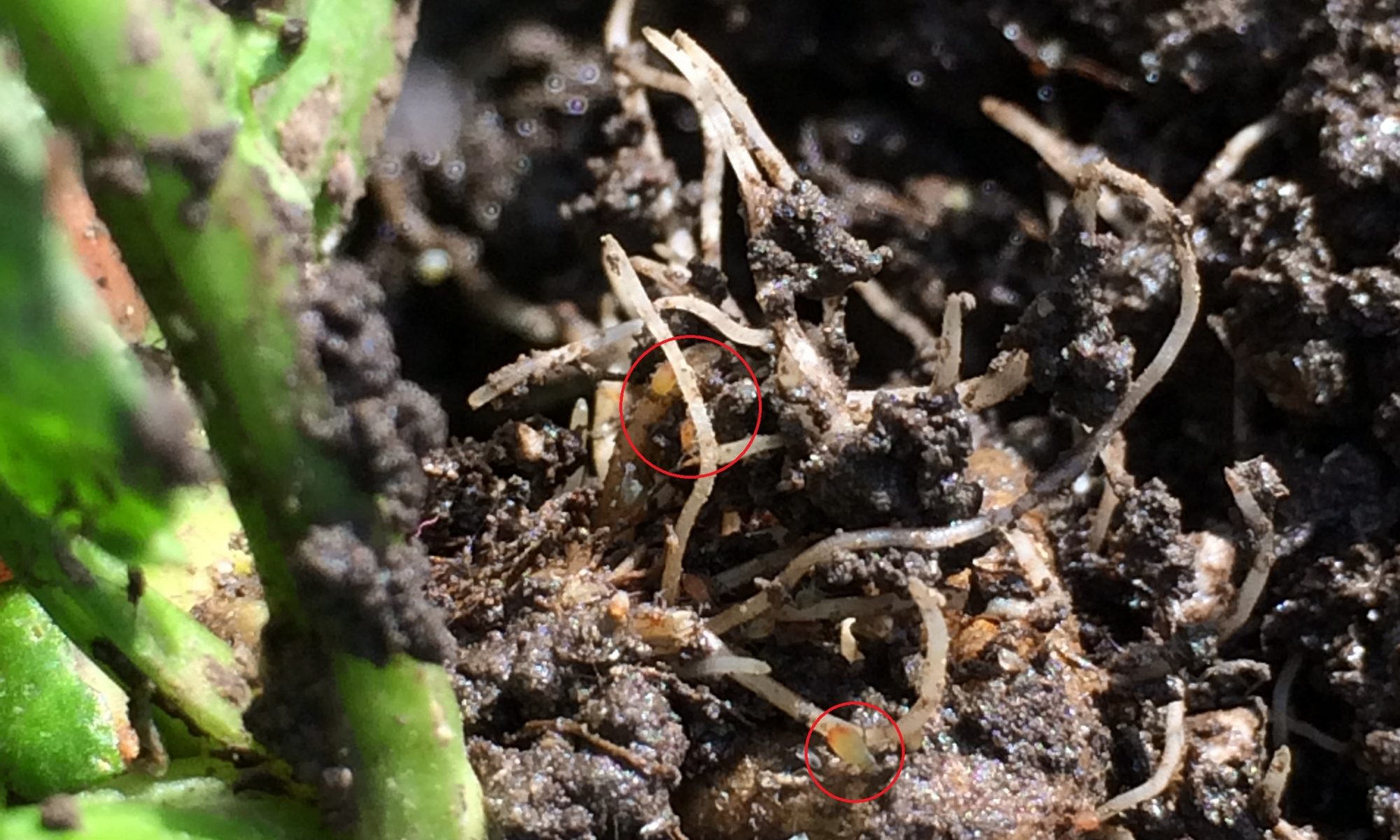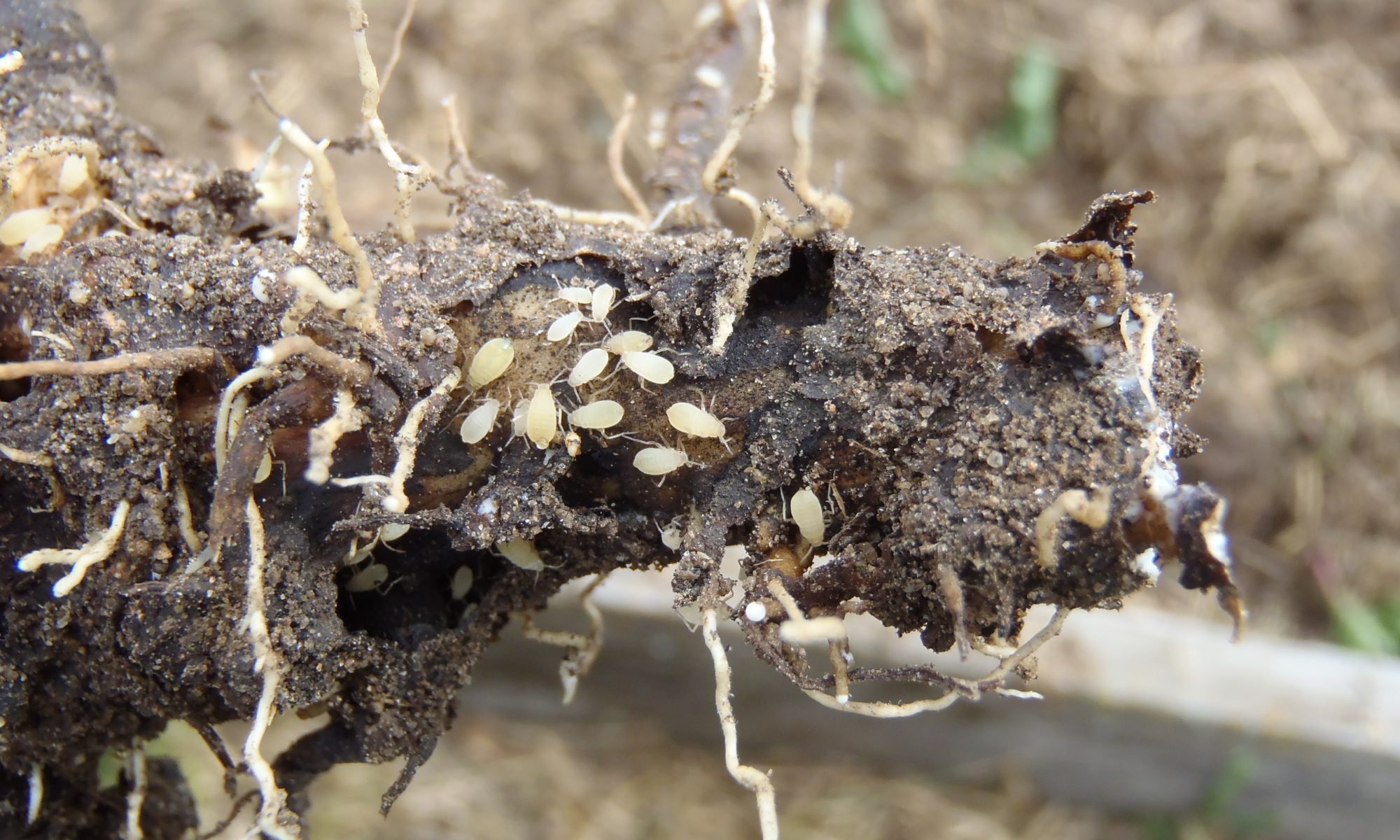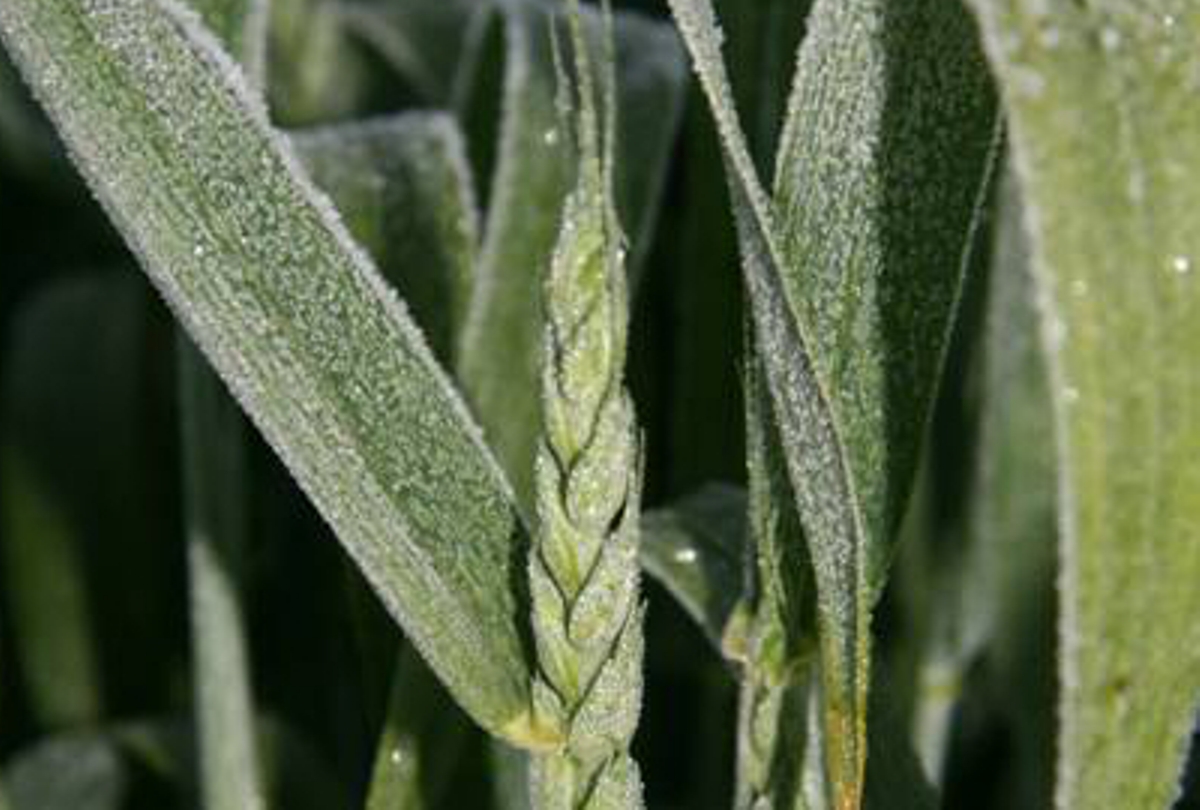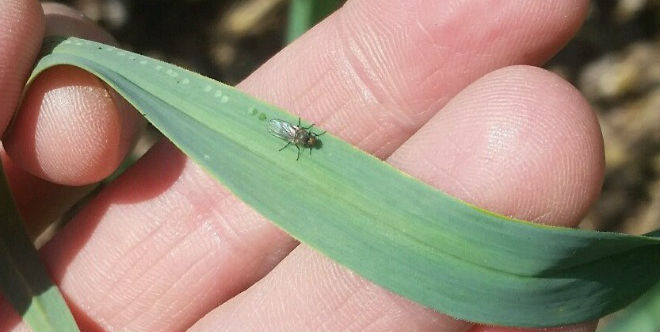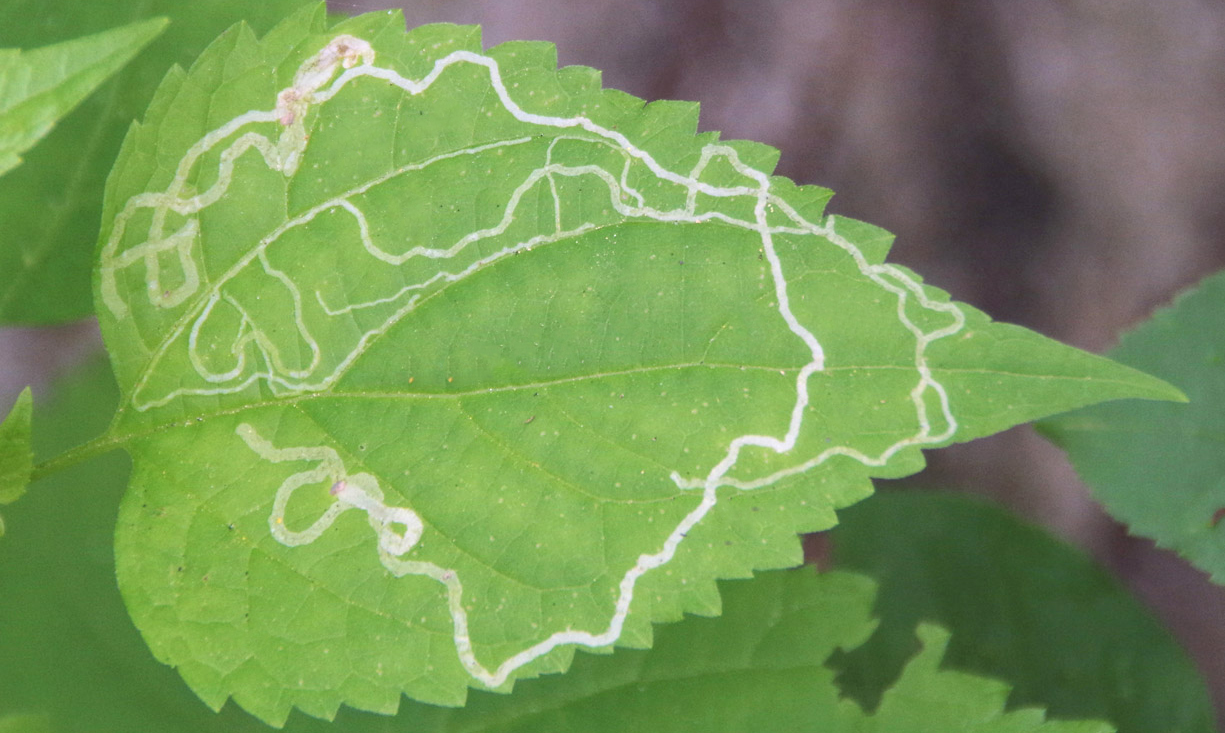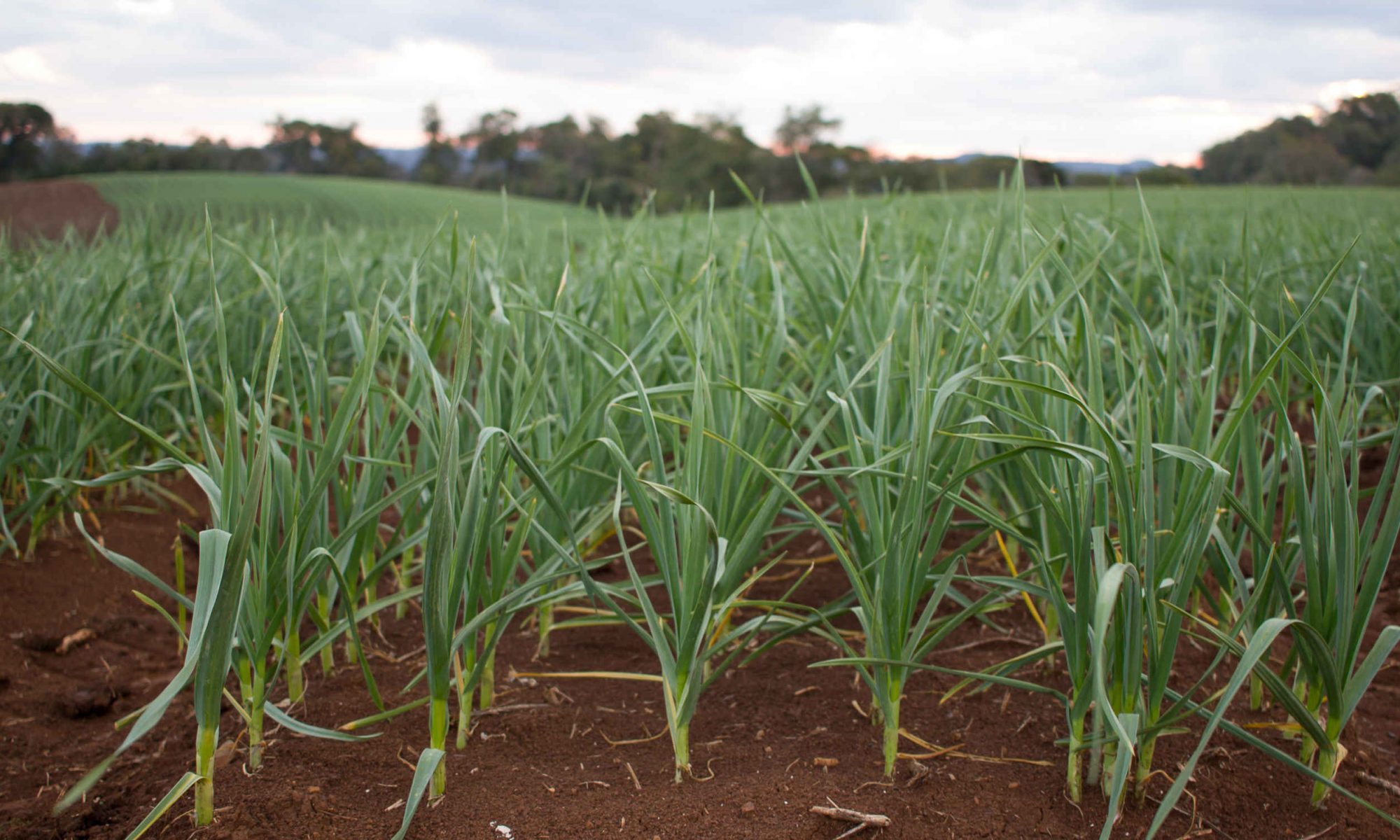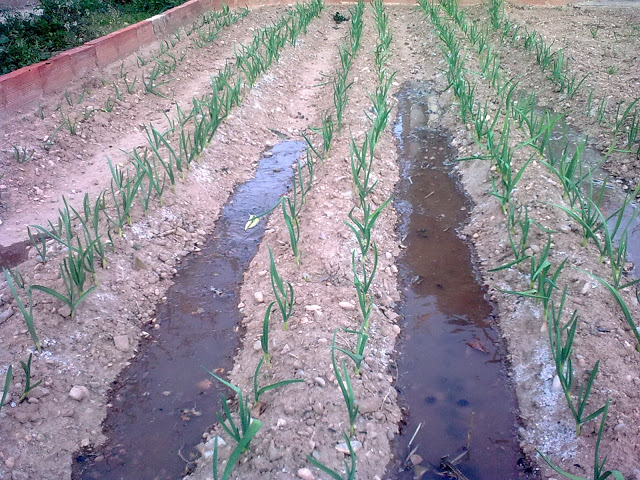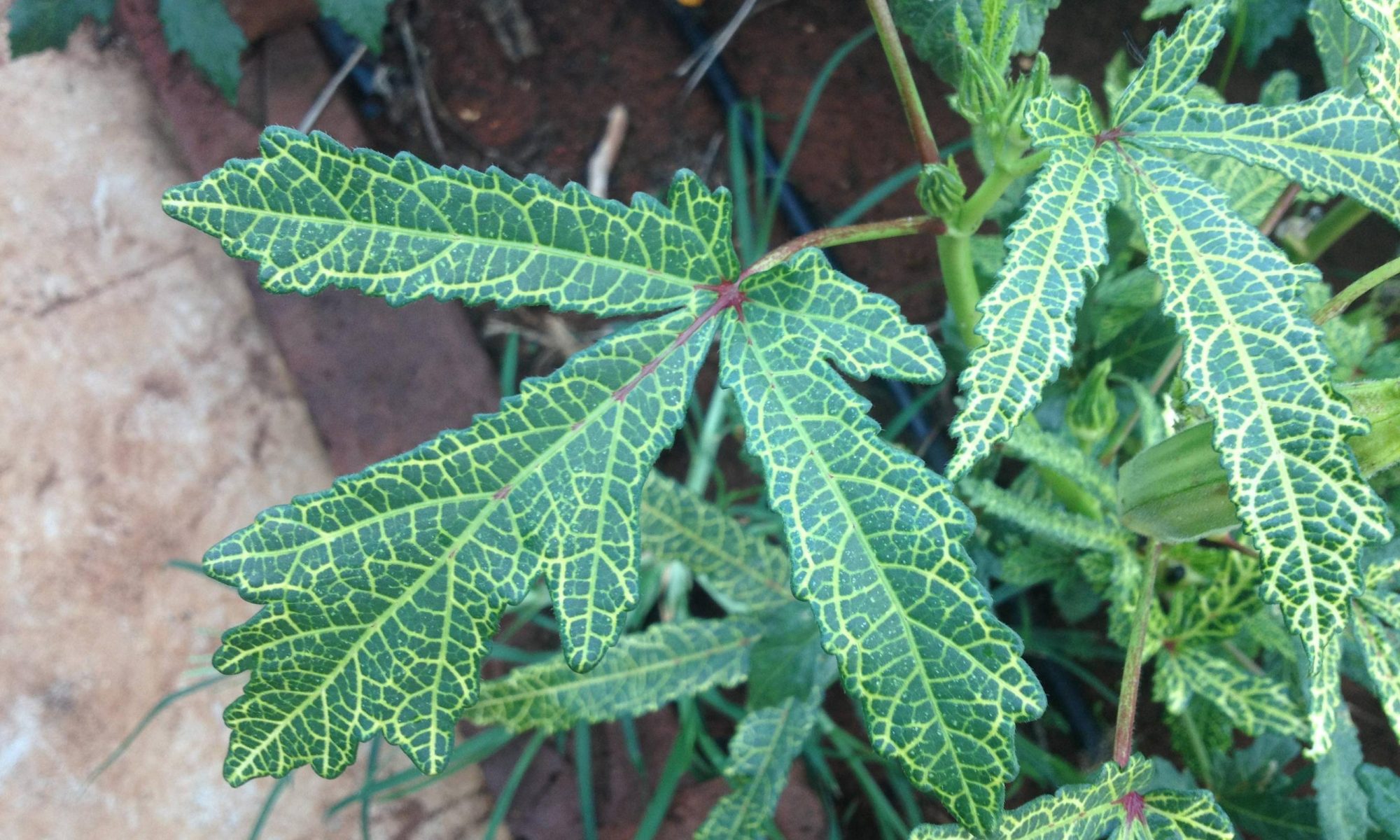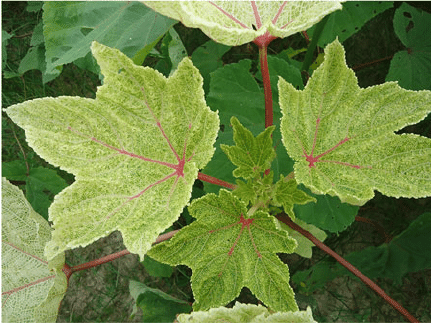- Termites damage the crop soon after sowing and sometimes near maturity.
- They feed on roots, stems of growing plants, even dead tissues of plant-feeding on cellulose.
- The damaged plants dry up completely and are easily pulled out.
- The plants damaged at later stages give rise to white ears.
- Infestation is heavy under unirrigated conditions and in the fields where un-decomposed farmyard manure is applied before sowing.
Management of root aphid in Wheat
- Avoid late sowing.
- Avoid using excessive nitrogen fertilizers.
- If the infestation in standing crop, Spray imidacloprid 17.8% SL @ 60-70 ml/acre.
- Or apply thiamethoxam 25% WG @ 100 gm + beauveria bassiana 2 kg/acre in soil with fertilizer/Sand/soil before irrigation.
Identification of root aphid in Wheat Crop
- This insect is active from November to February.
- Damage is more in the rainfed and late sown crop.
- The yellowing of young plants is observed due to root aphids.
- In this case minute, yellowish-brown aphids may be present near the base or on the roots of the plant.
- Aphids also vector a viral disease name barley yellow dwarf virus (BYD). The yield of infected wheat plants can be reduced by 50%
Measures for prevention of frost in crops
- Apply light irrigation in the evening on the leaves of the plants.
- Every year, the use of small amounts of sand in the field reduces the effect of frost in crops.
- Dry weed and dry wood burning in the opposite direction of the wind also reduce frost.
- Irrigate after spraying Sulfur 90% WDG powder in 3 kg/ acre.
- Spray Sulfur 80% WDG powder by mixing it at 40 grams/pump (15 liters of water)
- spray pseudomonas fluorescent 1 kg per acre.
Chemical management of leaf miner on garlic crop
- Affected plants during the growing season to be withdrawn and destroyed.
- Spray Wapkill (Acitamprid) @ 100 gm/acre or
- Confidor(Imidacloprid ) @ 100 ML/acre or
- Evident (Thaimethoxam ) @ 5 gm/pump or
- Abacin (Abamectin 1.8% EC) @ 150 ML
Identification of leaf miner
- Adults are small black and yellow flies.
- Larvae exit from the leaf upon completion of their development and pupate in the soil or in the leaf axils on plants.
- Females puncture the leaf to feed plant sap and lays eggs within the leaf tissue.
- The damage restricts the plant growth, results in reduce bulb yield and loss of vigor.
- Tunnels or mines can be seen in the leaves.
Nutrient management on garlic after 25 day
- Micronutrients are also effective in increasing the yield of garlic crops.
Given nutrient sequence are apply –
Nutrition Dose (15 DAS)
- Bulk Fetilizer Urea @ 20 Kg/acre + 12:32:16 @ 20 Kg/acre + Vigore @ 300gm/acre
Nutrition Dose (30 DAS)
- Urea @ 20 Kg/acre + Maxgrow @ 8 kg/acre
Nutrition Dose (50 DAS)
- Calcium Nitrate @ 6kg/acre + Zinc sulphate @ 8 kg/acre
Irrigation management on garlic
- First irrigation is given just after planting.
- Repeat irrigation 3 days after for ensuring germination.
- Irrigate as per need.
- Thereafter irrigate ones in a week during the vegetative phase and 10-15 days during bulb development
- Avoid irrigation during bulb maturity. Irrigate 2-3 days before harvest to facilitate easy uprooting.
Control of Yellow Mosaic Disease in Okra
- Remove and destroy disease-affected leaves/plants from crop fields to avoid secondary spread.
- Parbhani Kranti, Janardhan, Haritha, Arka Anamika and Arka Abhay can tolerate yellow vein mosaic.
- Do not use high fertilizer during plant growth.
- Do not roted okra with other hosts of the virus.
- If possible, choose early planting to the controlling of yellow mosaic virus disease.
- Keep sanitation while using any tools that are using in crop.
- Use 4-5 sticky trap/acre to the controlling of whitefly infestation.
- Spray imidacloprid 17.8% SL 80 ml/acre for the controlling of whitefly.
- Spray dimethoate 30% EC 250 ml/acre of water.
Like and share with other farmers by clicking on button below
ShareYellow Mosaic Disease in Okra/Bhindi
- This is the most important and destructive viral disease in bhindi.
- The disease infects at all the stages of crop growth and severely reduces growth and yield.
- The disease is transmitted by whitefly.
- The characteristic symptoms of the disease are a homogenous interwoven network of yellow veins enclosing islands of green tissues.
- Initially, infected leaves exhibit only yellow-colored veins but in the later stages, the entire leaf turns completely yellow.
- The fruits of the infected plants exhibit pale yellow color, deformed, small and tough in texture.
Like and share with other farmers by clicking on the button below
Share
